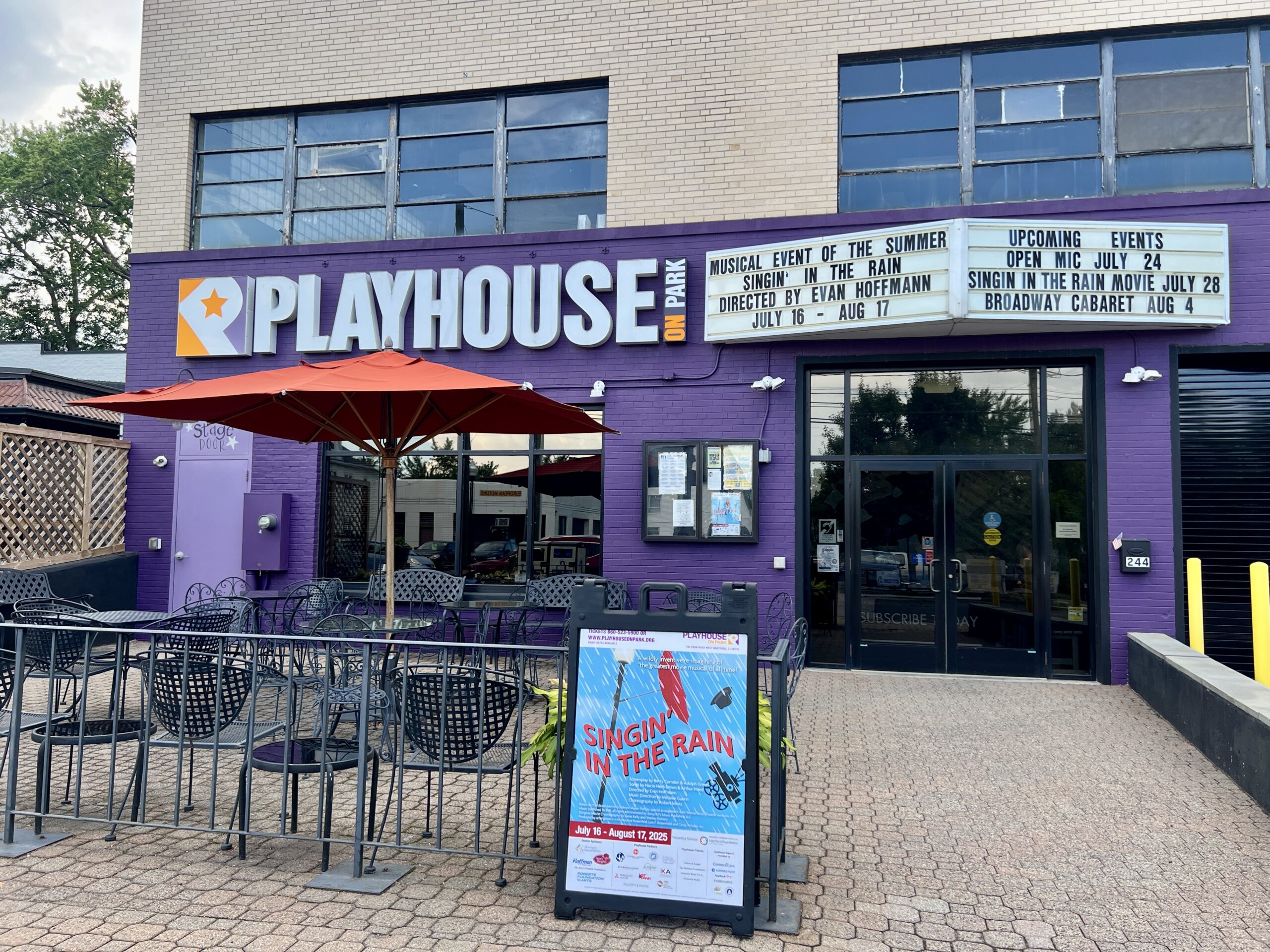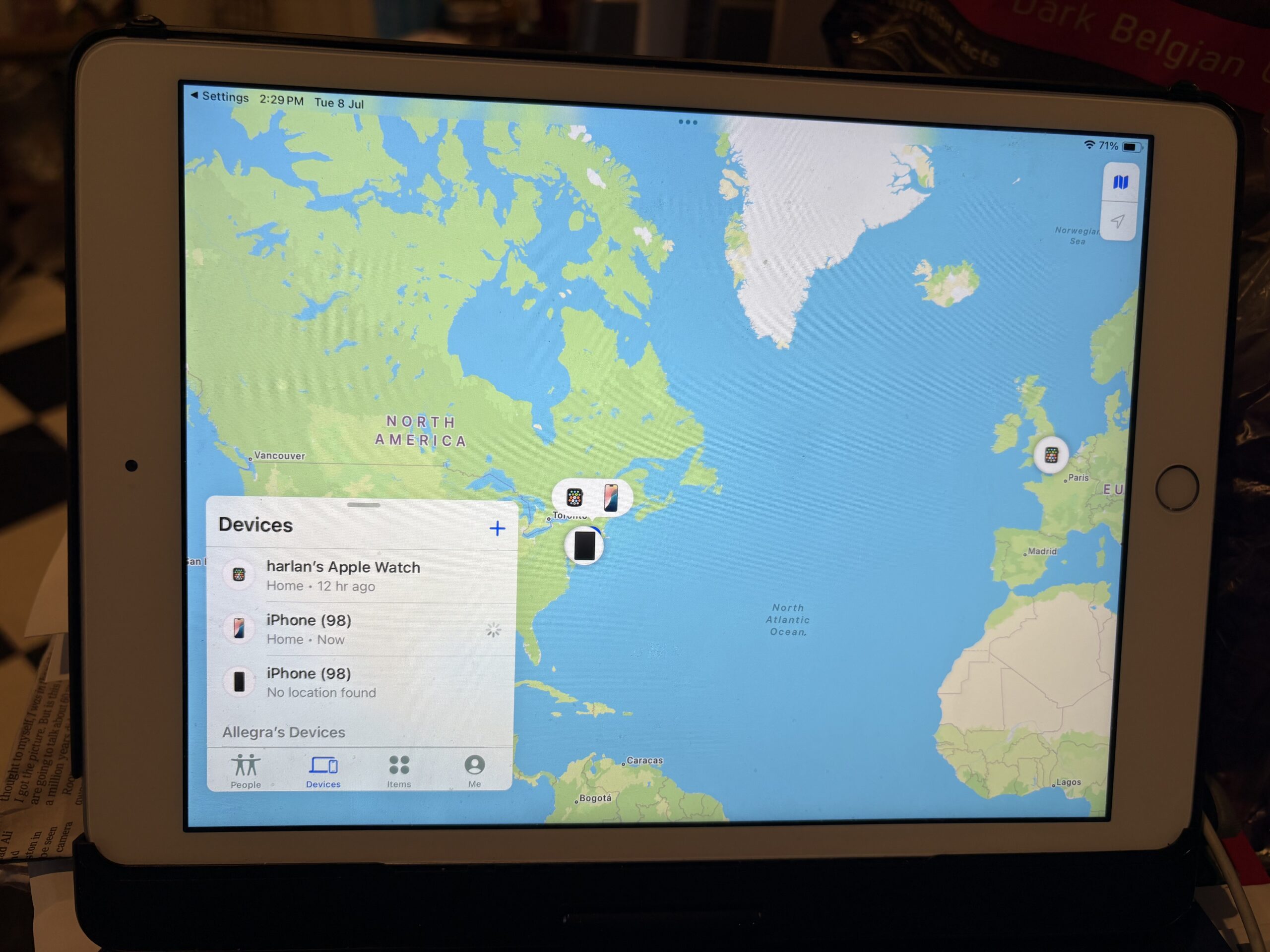Coral Propagation Underway in New Aquarium System at Hall High School

Audio By Carbonatix
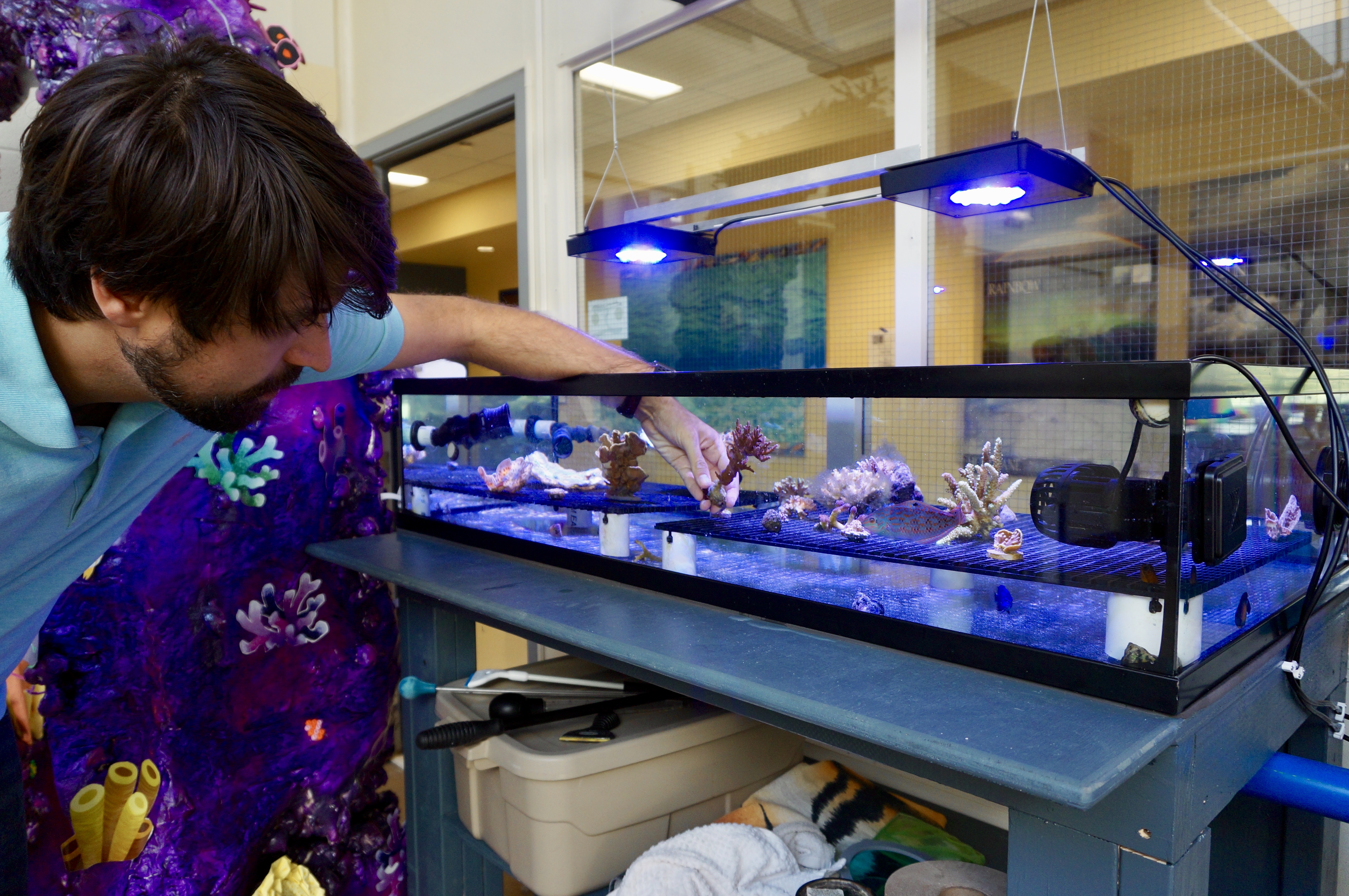
Hall marine science teacher Anthony Wasley demonstrates how coral is grown through fragments. Photo credit: Ronni Newton
Science teacher Anthony Wasley and students at West Hartford’s Hall High School are growing coral in a new system of tanks installed over the summer.
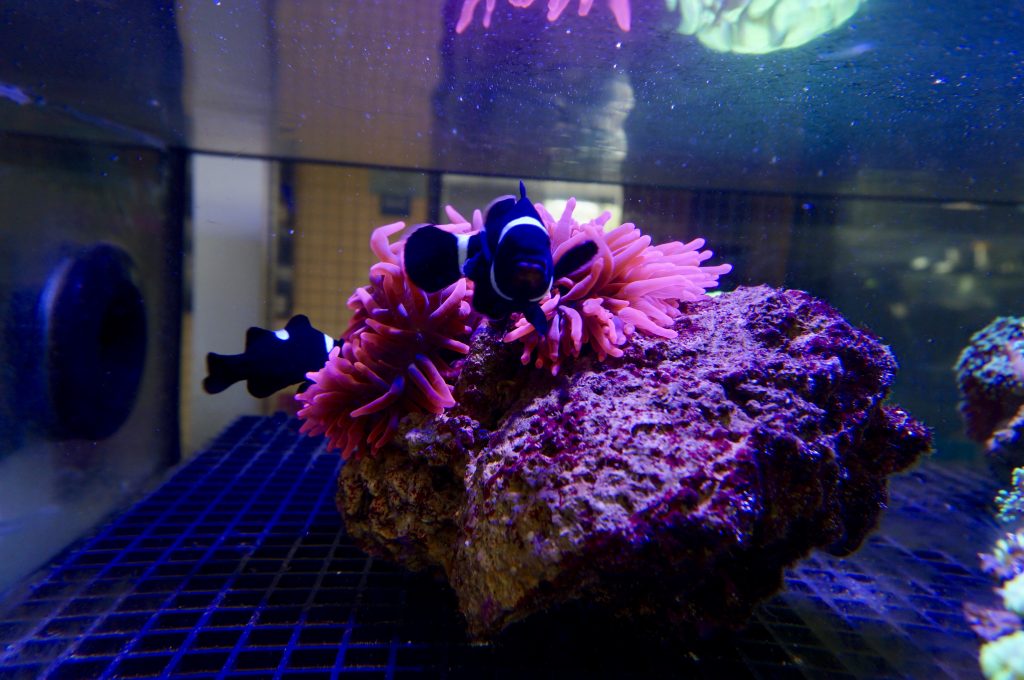
Clownfish swim among the anemones. Photo credit: Ronni Newton
By Ronni Newton
There’s not a coral reef anywhere near West Hartford, but there are dozens of types of corals growing in town and some may one day play a role in regenerating a reef elsewhere in the world.
Hall High School science teacher Anthony Wasley said he spent about 300 hours this past summer not just moving his classroom from a portable to the school’s science wing, but also setting up an extensive new tank system to greatly expand the ability to grow coral in the school.
Hall’s new science labs opened for the 2019-20 school year, and allowed Wasley to relocate the corals to room B225 – into space where they grow in a series of tanks that can be seen from a hallway window.
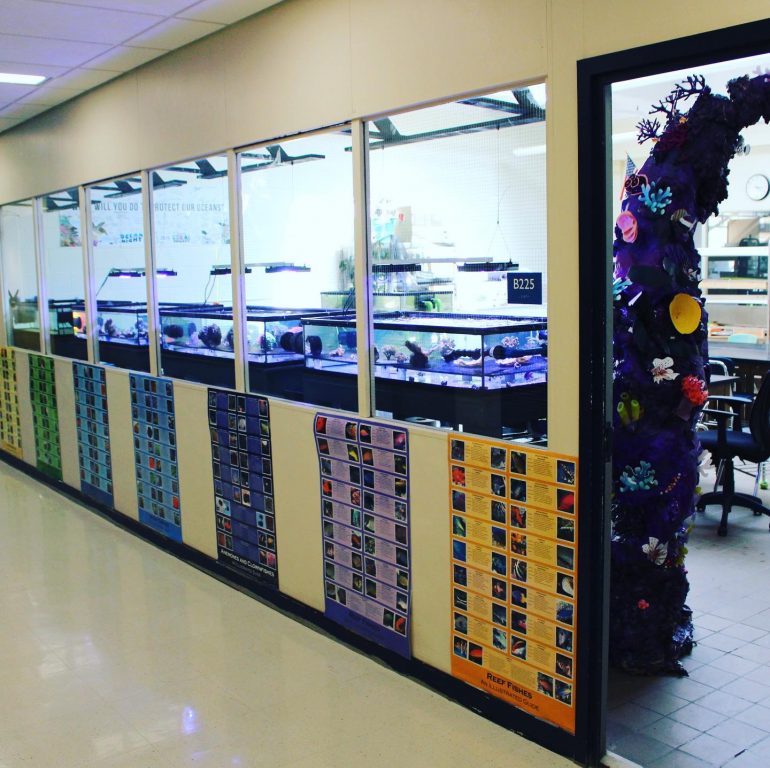
The Coral Project can be seen through the hallway window into Room B225. Courtesy of Anthony Wasley
He originally wanted to install one 8-foot by 4-foot tank, but it would have cost $2,000. Instead there are multiple 50- and 100-gallon tanks that are connected, with a total capacity of 450 gallons. His previous system was 150 gallons.
Each tank is home to different types of corals – including SPS (small polyp stony), LPS (large polyp stony), and soft corals. They are a multitude of colors and shapes.
“Fish can swim from one tank to another,” said Wasley, a move that also saved the need to install filtration systems and pumps in each tank.
The fish make it more interesting, and they also eat flatworms – which are considered pests that could negatively impact the coral.
Many of the fish have names, and personalities, Wasley said, pointing to Leia, a “big and feisty” clownfish swimming among the anemones in the tank. Leia doesn’t like him very much, Wasley said.
His new space has ample natural light, and is also a perfect environment for the live mangroves that are also growing as part of the project.
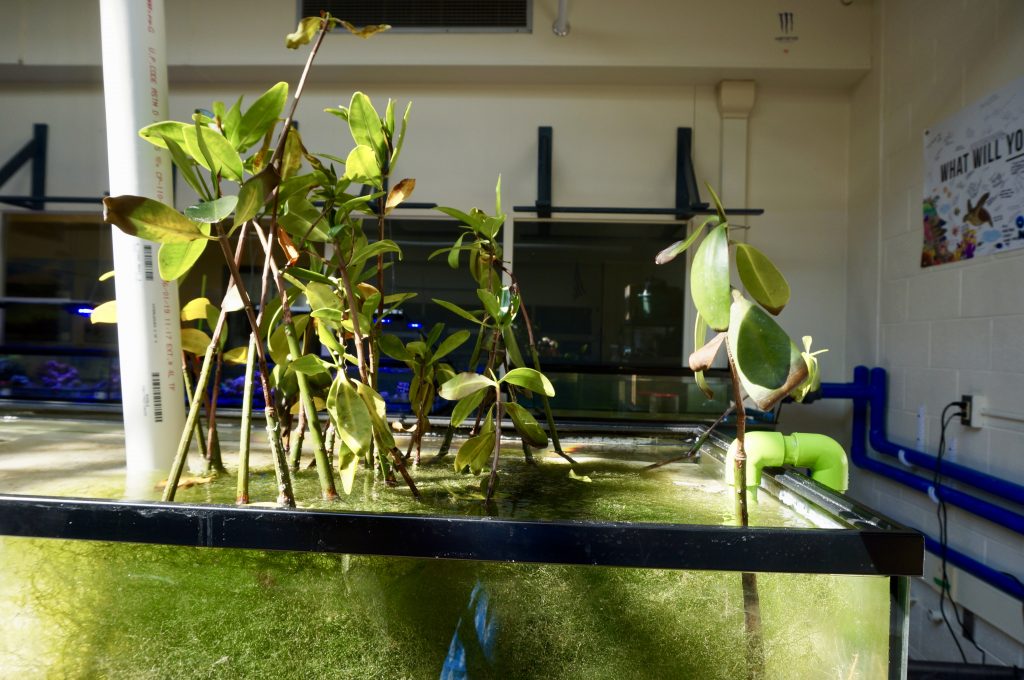
Mangroves grow in a tank at Hall High School. Photo credit: Ronni Newton
“They pull in nutrients to clean the water of fish and coral waste. They absorb it through their roots and use that to grow,” Wasley said. The mangroves could eventually reach ceiling height, he said.
Wasley, who a 2017 West Hartford Teacher of the Year finalist, is giving students a chance for a unique hands-on learning experience in his classroom.
The students feed the corals and the fish. Coral food, which he said is primarily ground up zooplankton, is administered through a turkey baster. The flow of the water through the tanks needs to be turned down before the feeding takes place, he said.
He has set up the system so everything is computerized – the lighting, temperature, flow of the water – and can be controlled from the computer in the classroom, as well as through computers or even smartphones anywhere.
Students have a variety of other jobs that keep the overall system running, including cleaning and maintaining the filter sock, removing salt corrosion, scrubbing off algae, preparing and changing the water, and testing the water for alkalinity, calcium, magnesium, phosphate, and nitrates. Students also serve as caretakers for the mangroves.
“There is no handbook,” Wasley said. “This is the largest single coral propagation system in a high school in the state.”
There are about 40 students who are currently enrolled in Wasley’s two marine science classes. He would like to have more students take the class, but since it’s a single-semester class with a lab, it can be hard for students to fit the class around other subjects. He said the kids who take the class absolutely love it, and he would like to be able to expand the class to a full year to allow students to undertake a longterm research project with the corals.
“I’d like to run experience and measure how much corals grow,” he said. “They grow so slowly, we’d need more than one semester.”
Conard also offers marine science, and the curriculum would need to be expanded at both schools, he said.
The corals are important to more than just the marine science students. The Hall High Coral Project, a club Wasley launched last year, has the goal of bringing attention to the plight of coral and getting more students involved in research into ways to effect change.
There are about 30-40 students from all grade levels in the club, Wasley said, with a core group of 10 who are so dedicated they stop by and check on the coral every day.
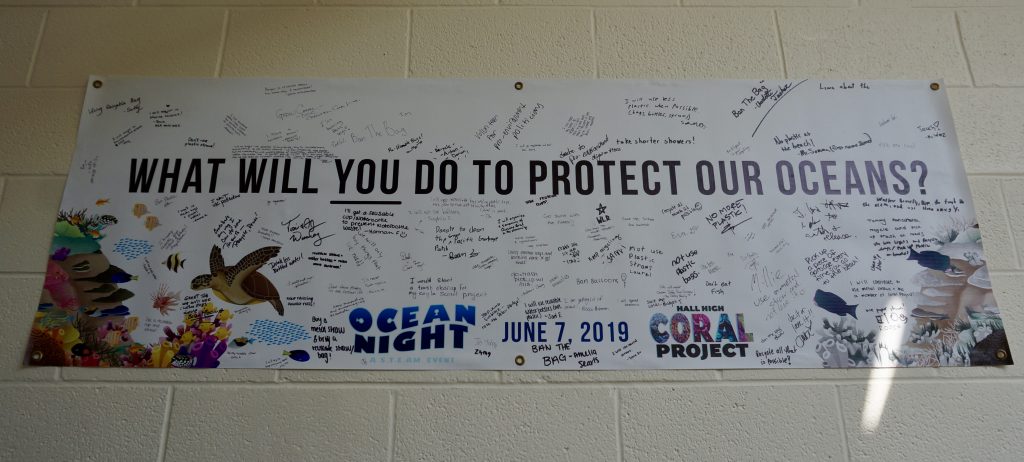
Poster from Ocean Night. Photo credit: Ronni Newton
Last June the club hosted Ocean Night as a fundraiser, an event which involved a screening of “Chasing Coral” in the auditorium.
This year the club will be hosting various fundraisers, selling t-shirts and water bottles to raise money to obtain more corals and to support the fragging of corals which can then be sold at coral shows.
Coral shows, Wasley said, “are like farmers markets for coral.” People who grow corals as a hobby come to the shows to buy their corals.
Fragging is a method of propagating new corals – breaking off pieces of existing corals into fragments which are then grown. “The idea behind it is rather than pulling corals from the ocean, we grow corals ourselves,” Wasley said.
A fragment of coral is glued to a coral plug, which gives it weight and anchors it, making it easier to handle without disturbing it, Wasley said. The fragment will then begin to grow.
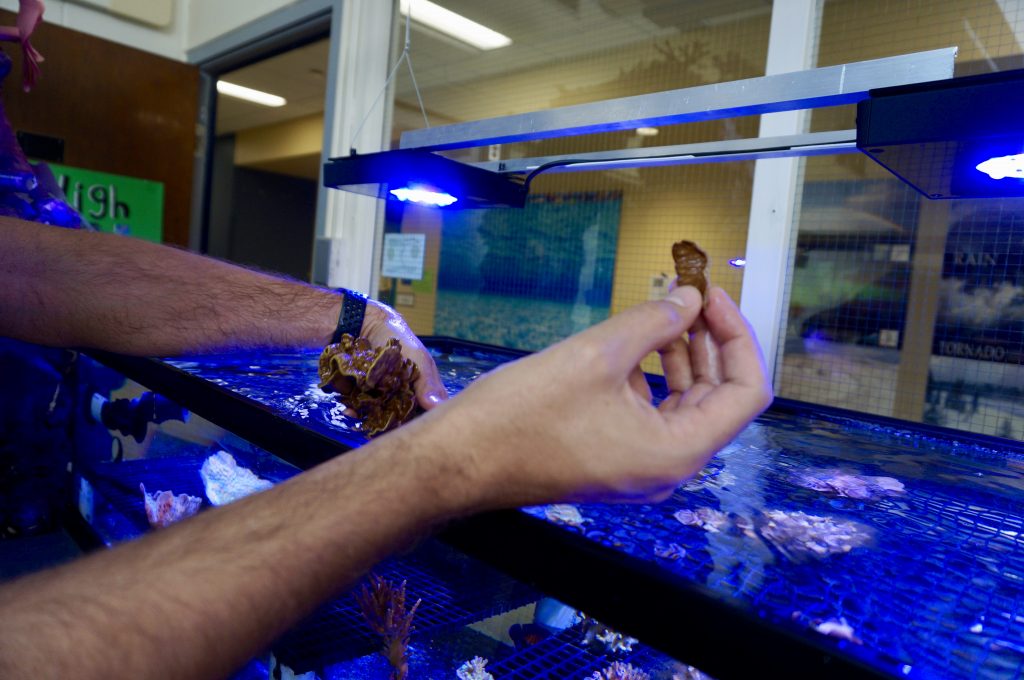
Hall marine science teacher Anthony Wasley demonstrates how coral is grown through fragments. Photo credit: Ronni Newton
Students are involved in the fragging process as well – and even designed racks to hold the fragmented corals. They’re also involved in the coding of the APEX computer system that runs the aquariums, and they calculate flow rates, evaporation, etc.
“This is truly a STEM experience,” Wasley said.
Three different grants from the Foundation for West Hartford Public Schools – totaling $5,000 – have provided the funding for the coral project thus far. Wasley is hopeful that selling coral will eventually allow the project to fund itself – and help with regeneration of coral in reefs worldwide.
Lighting is the most expensive item, and Wasley said that one tank is not being used right now because the funds aren’t there to purchase a lighting system.
Wasley, who studied environmental and marine science at UConn, has had a passion for coral and fish since he was a kid, and was setting up tanks in his home as a 12-year-old. He and his wife have done dives at the Great Barrier Reef.
Coral covers 1 percent of the ocean, Wasley said. But without corals, you would lose 25 percent of the fish in the ocean, he said.
“These animals have been doing the same song and dance for 250 million years,” Wasley said. They have survived the mass extinctions of many other species.
The problem now with corals – animals which he likened to “upside down jellyfish” – is that they have a symbiotic relationship with a plant, the algae that forms the “skin” of the corals. When the water gets too hot, the algae dissolves, essentially leaving the corals without their “sunscreen,” which is how they bleach and then die.
Wasley is optimistic about coral, and he and his students are doing their part to help. “Corals are survivors. They’ll find a way,” Wasley said.
Like what you see here? Click here to subscribe to We-Ha’s newsletter so you’ll always be in the know about what’s happening in West Hartford!
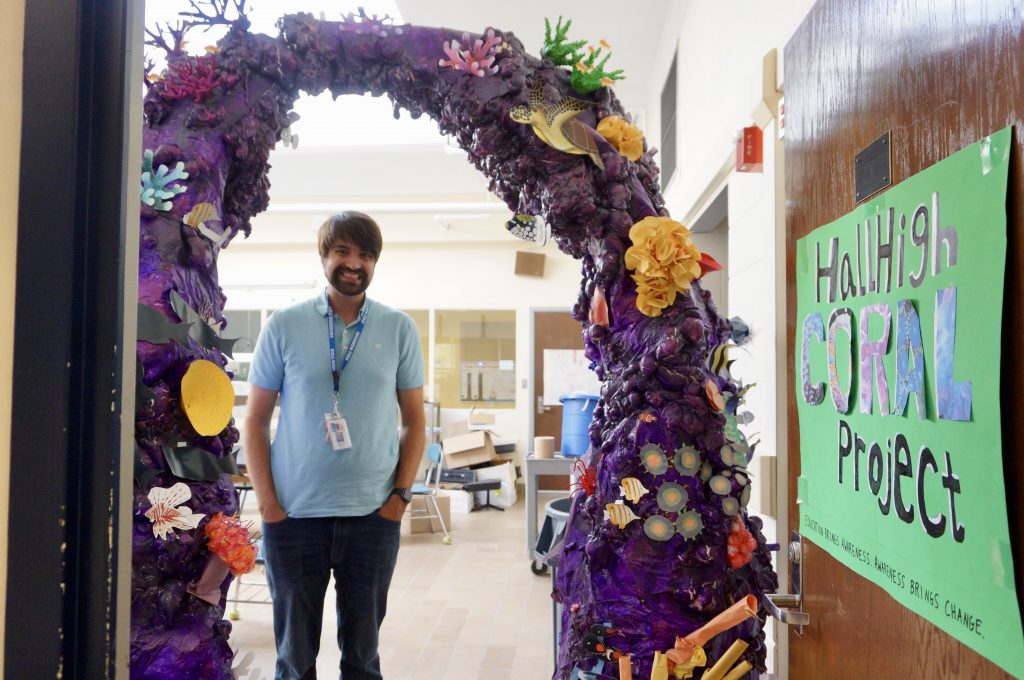
Anthony Wasley stands in the doorway of Room B225 at Hall, where coral is growing in a system of tanks. Photo credit: Ronni Newton
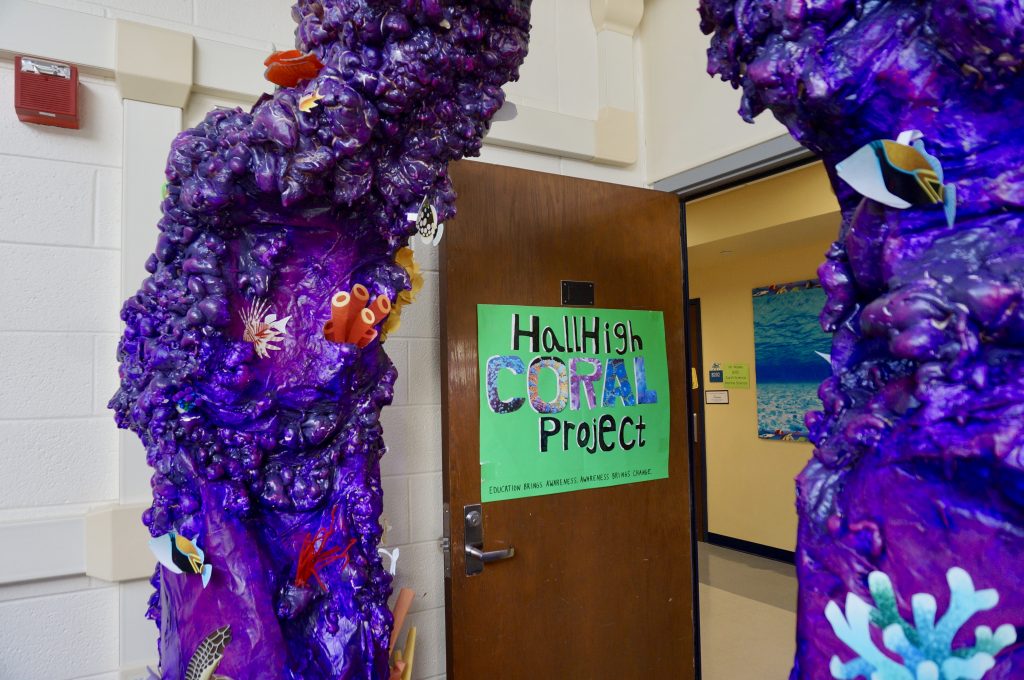
Room B225 at Hall High School, where a variety of corals are growing in a series of tanks. Photo credit: Ronni Newton
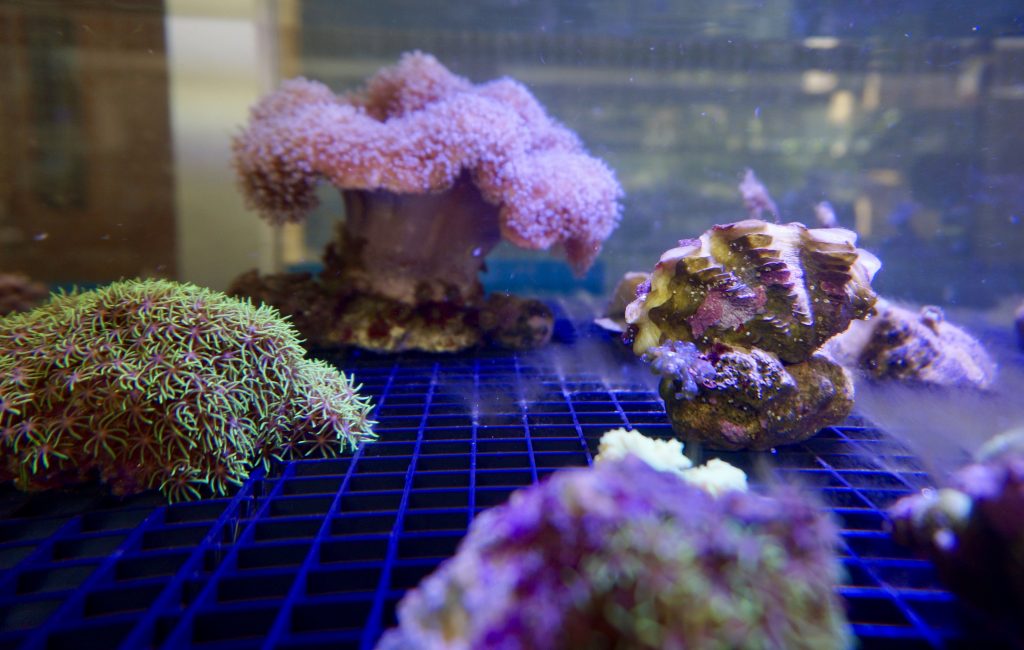
Room B225 at Hall High School, where a variety of corals are growing in a series of tanks. Photo credit: Ronni Newton
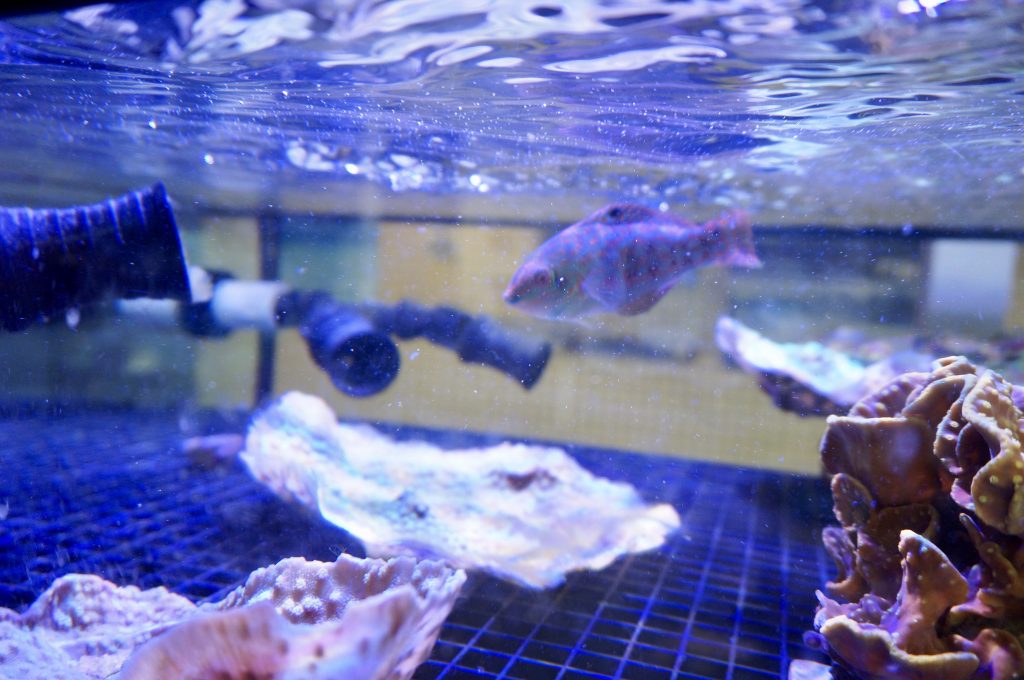
Room B225 at Hall High School, where a variety of corals are growing in a series of tanks. Photo credit: Ronni Newton
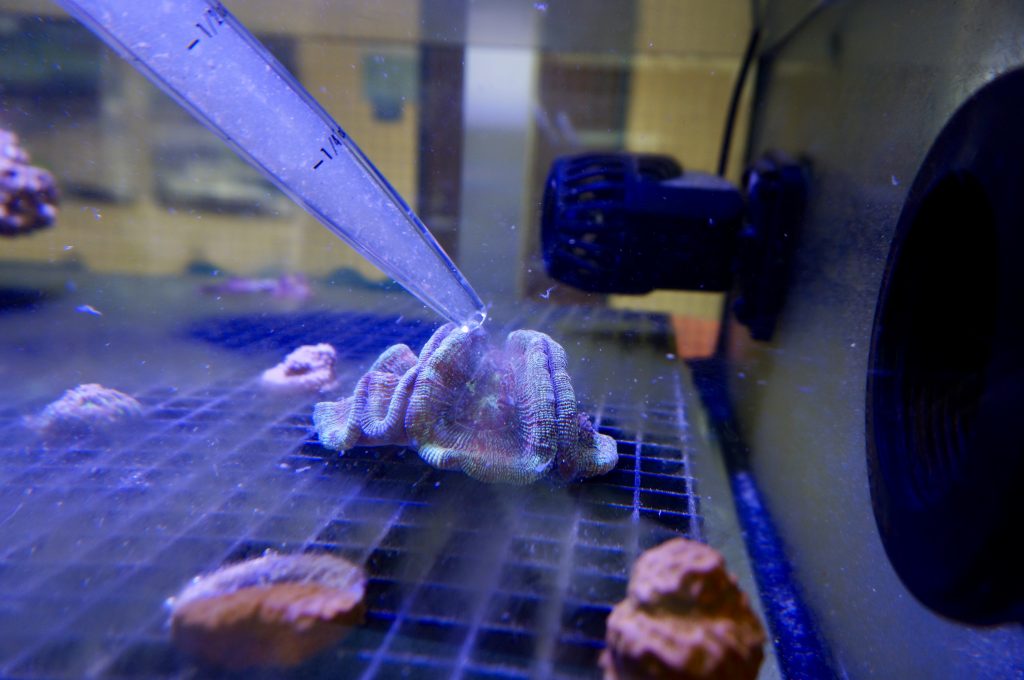
Corals are fed through a turkey baster. Photo credit: Ronni Newton
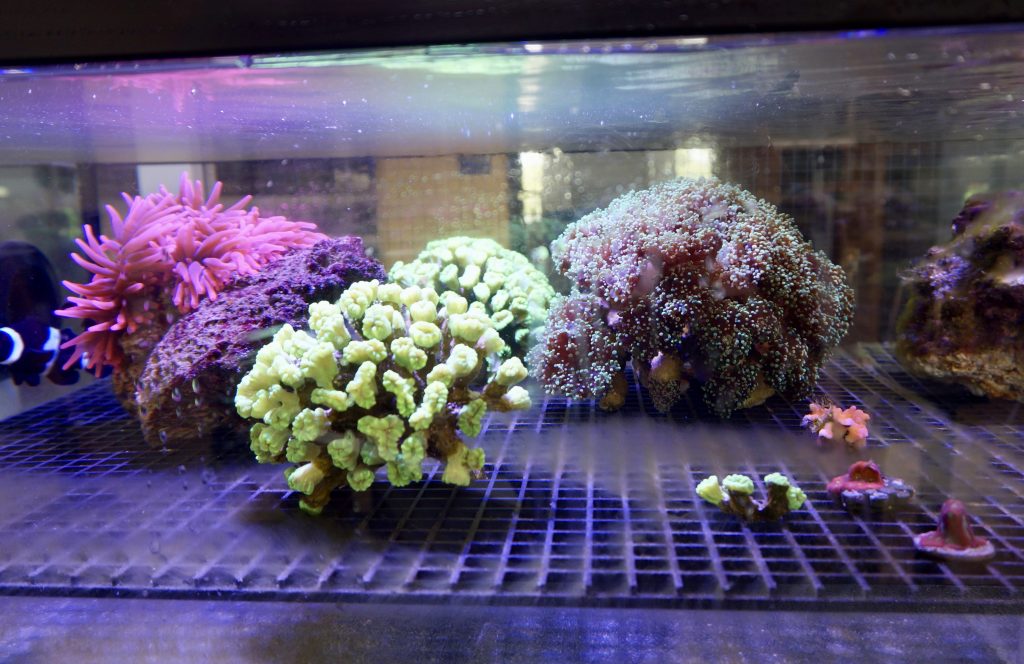
Room B225 at Hall High School, where a variety of corals are growing in a series of tanks. Photo credit: Ronni Newton
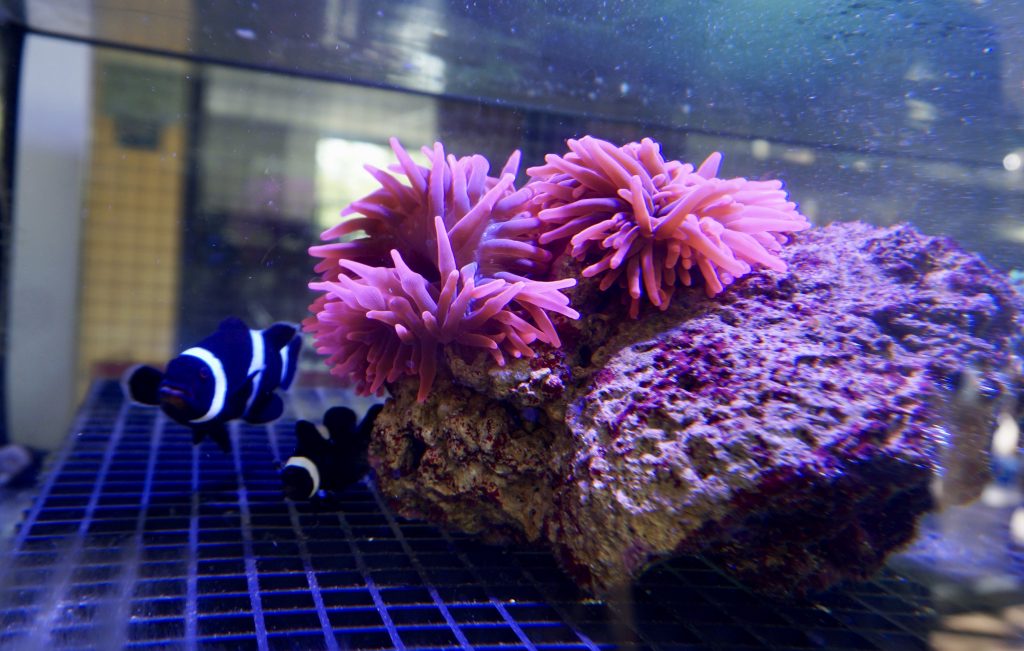
Clownfish swim among the anemones. Photo credit: Ronni Newton
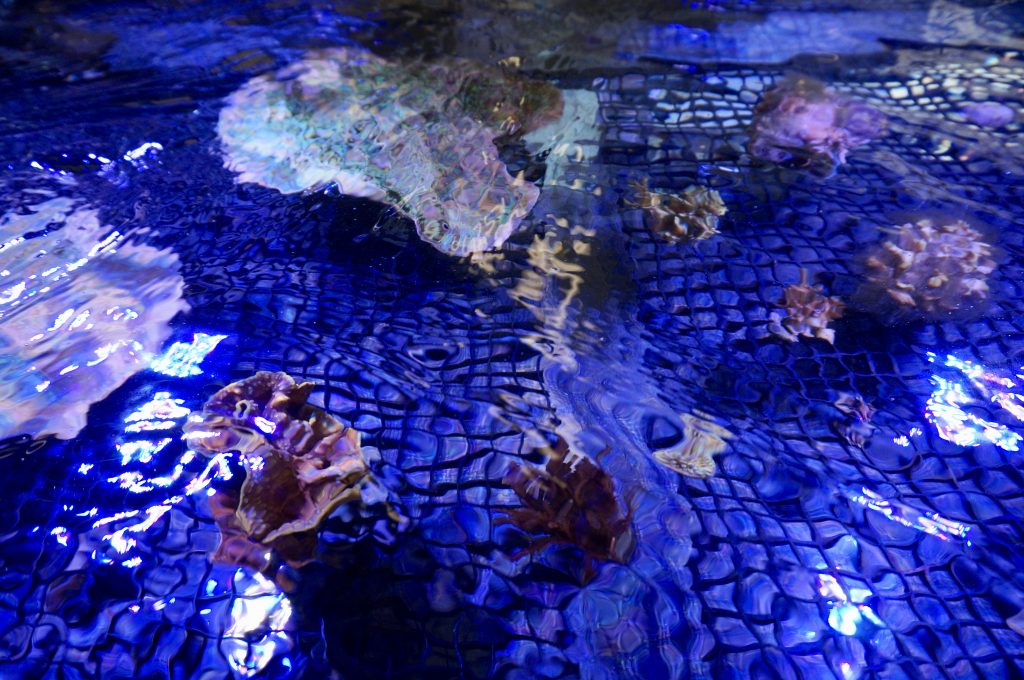
Room B225 at Hall High School, where a variety of corals are growing in a series of tanks. Photo credit: Ronni Newton
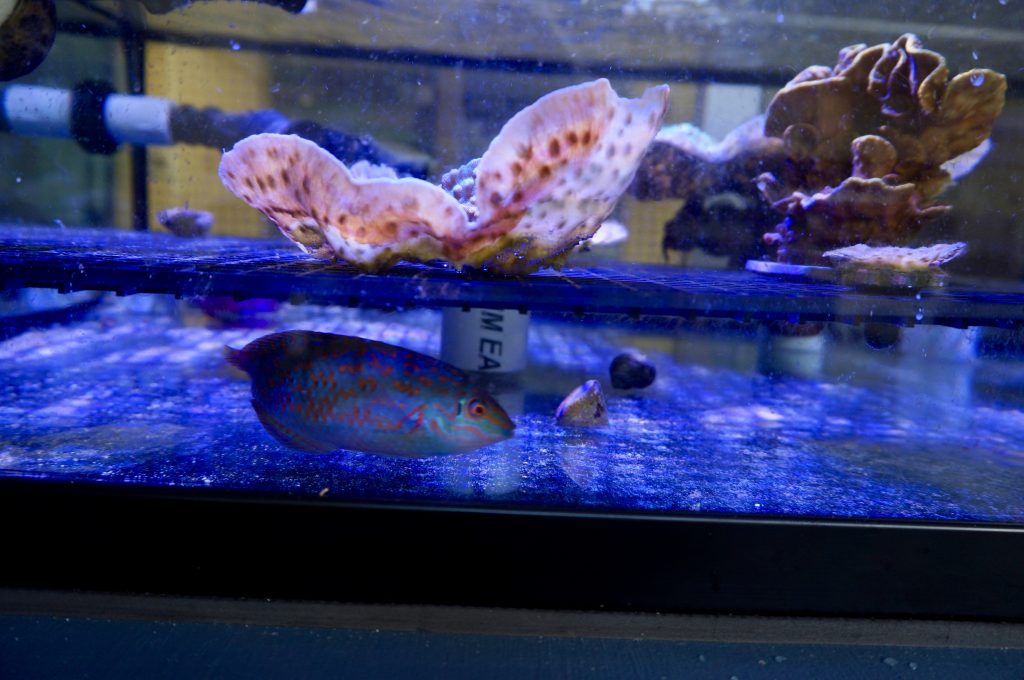
Room B225 at Hall High School, where a variety of corals are growing in a series of tanks. Photo credit: Ronni Newton
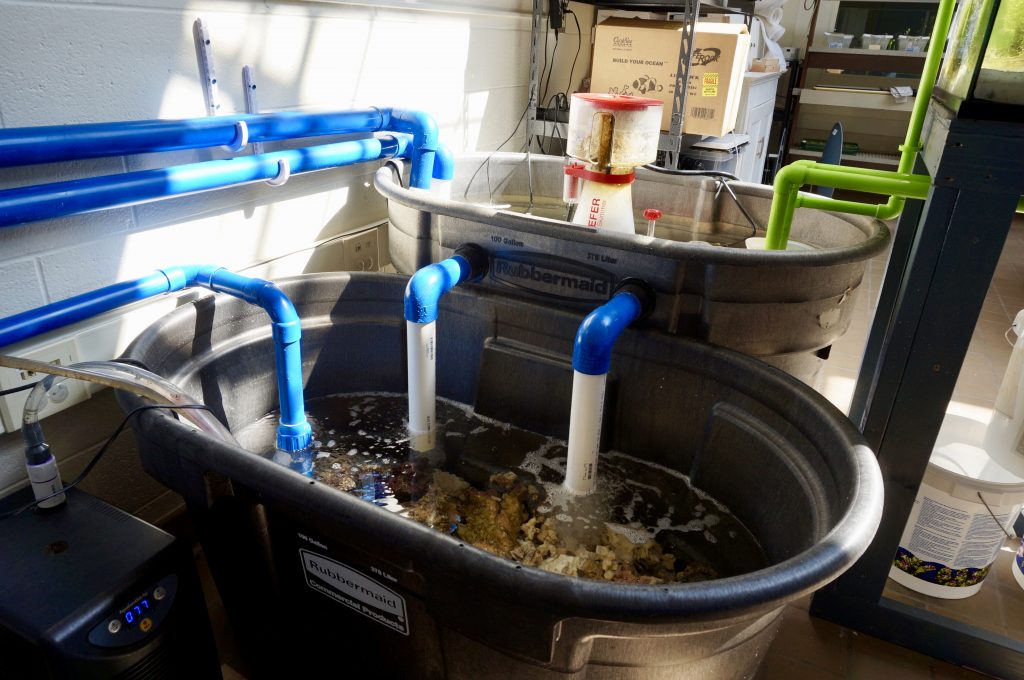
Room B225 at Hall High School, where a variety of corals are growing in a series of tanks. Photo credit: Ronni Newton
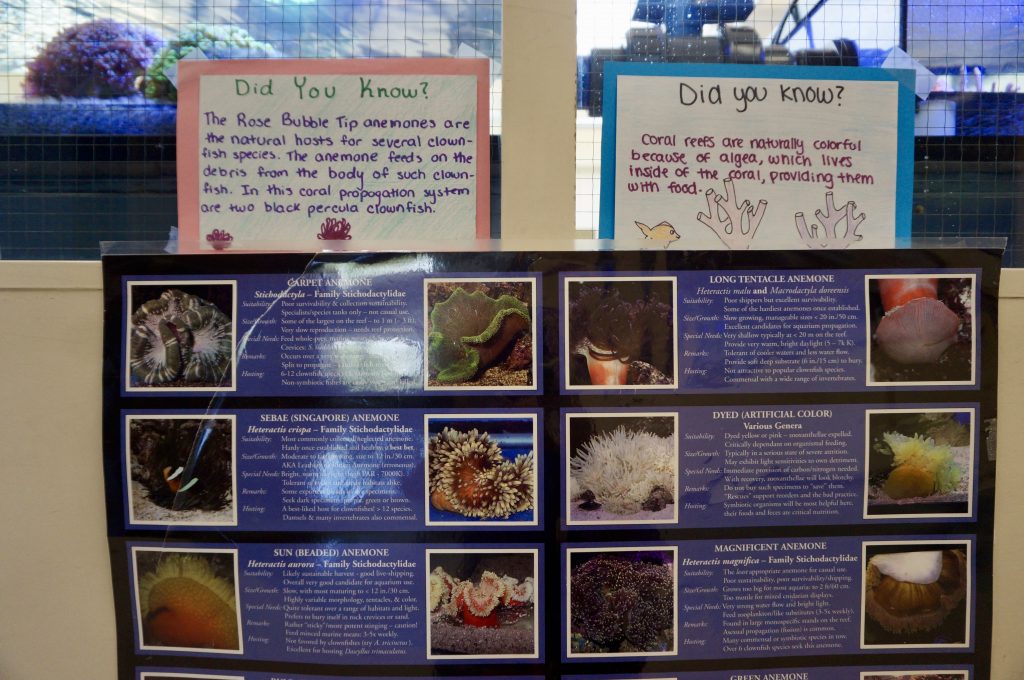
Room B225 at Hall High School, where a variety of corals are growing in a series of tanks. Photo credit: Ronni Newton
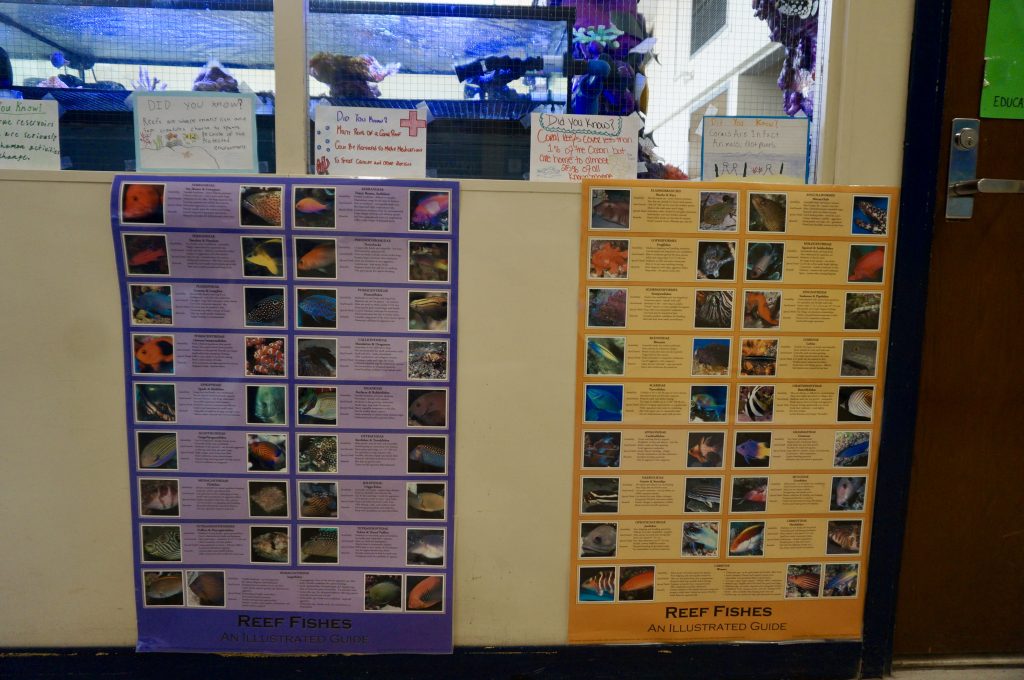
Room B225 at Hall High School, where a variety of corals are growing in a series of tanks. Photo credit: Ronni Newton
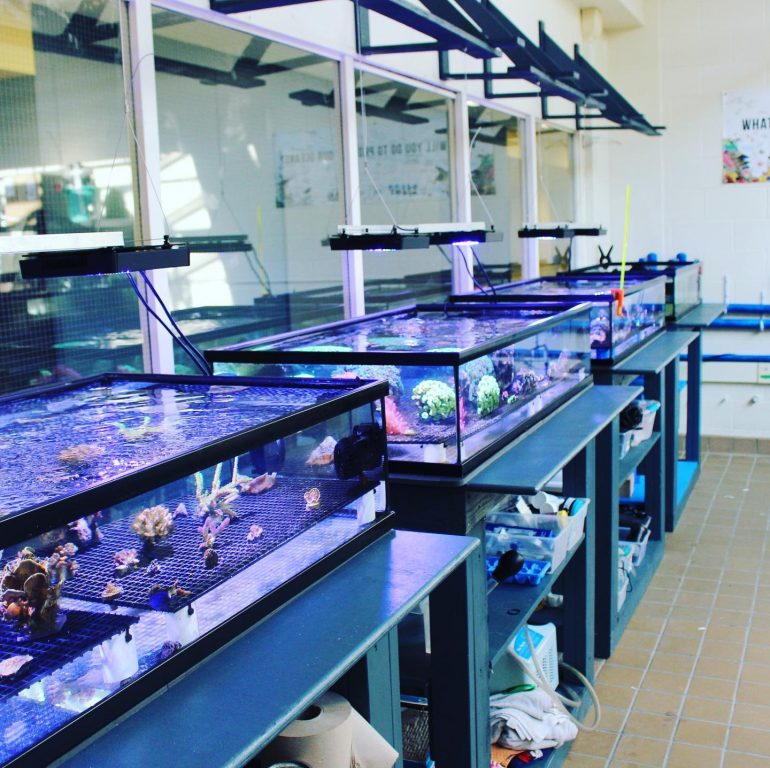
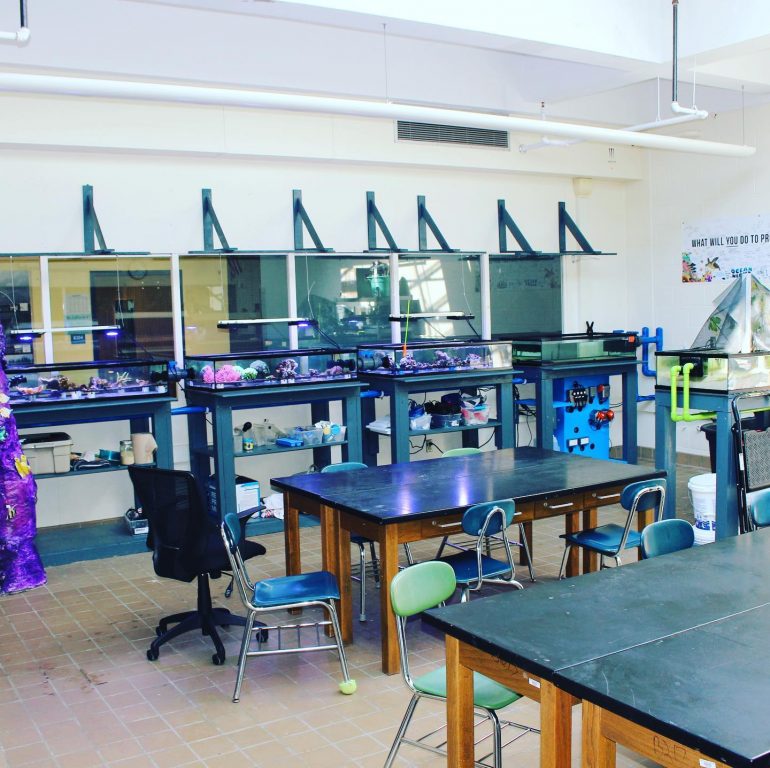
Room B225 at Hall High School, where a variety of corals are growing in a series of tanks. Courtesy of Anthony Wasley
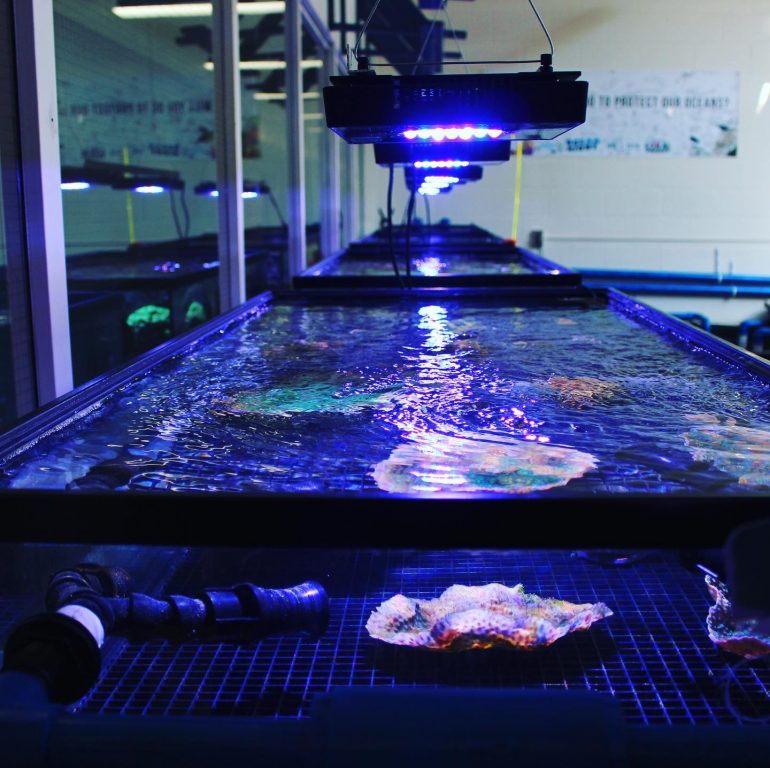
Room B225 at Hall High School, where a variety of corals are growing in a series of tanks. Courtesy of Anthony Wasley


